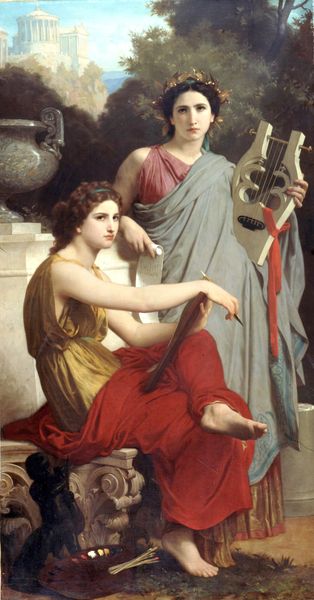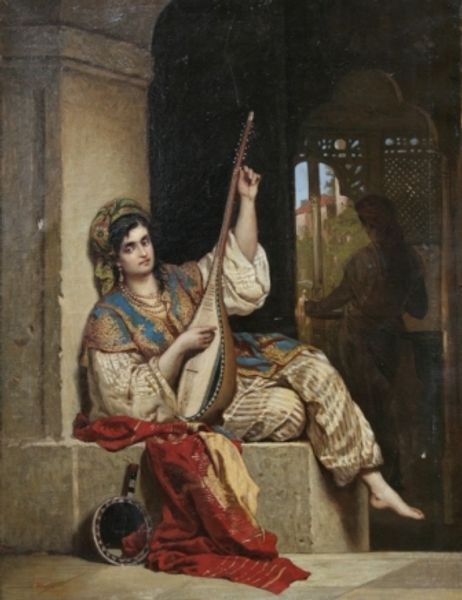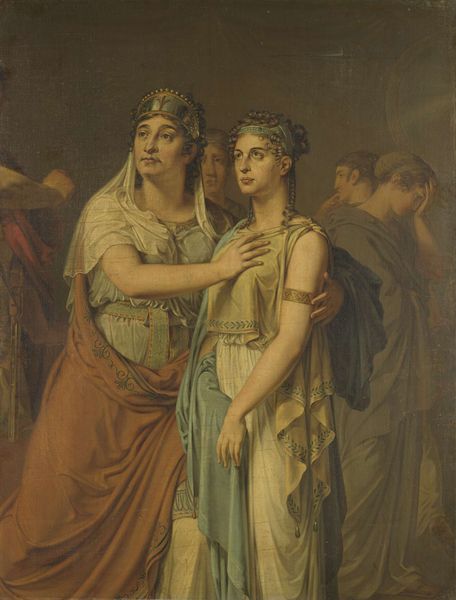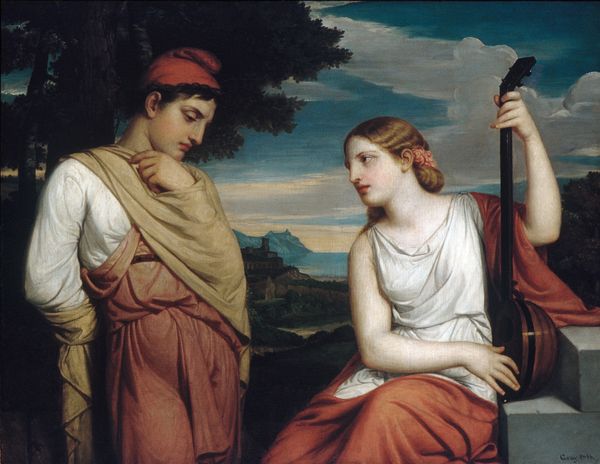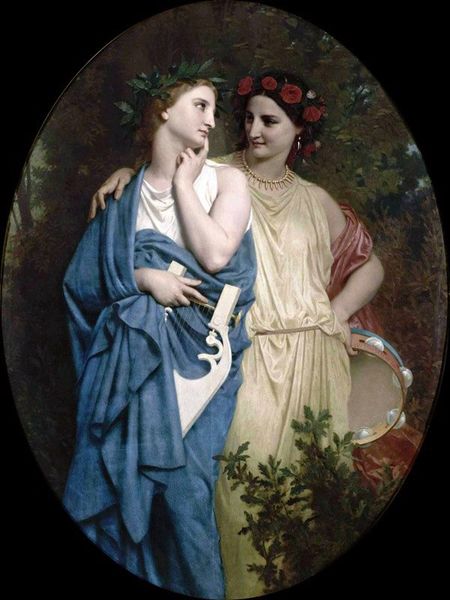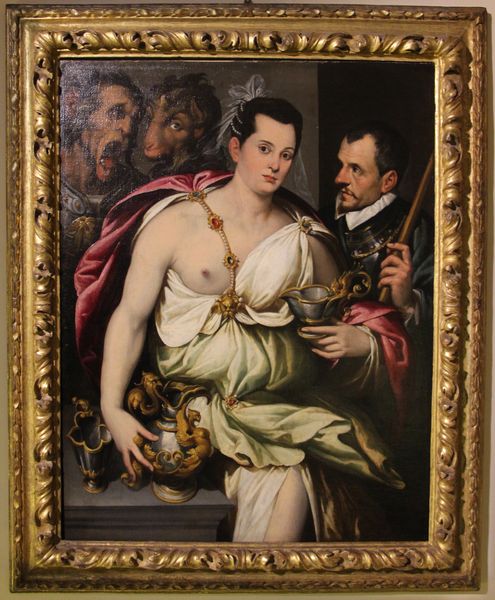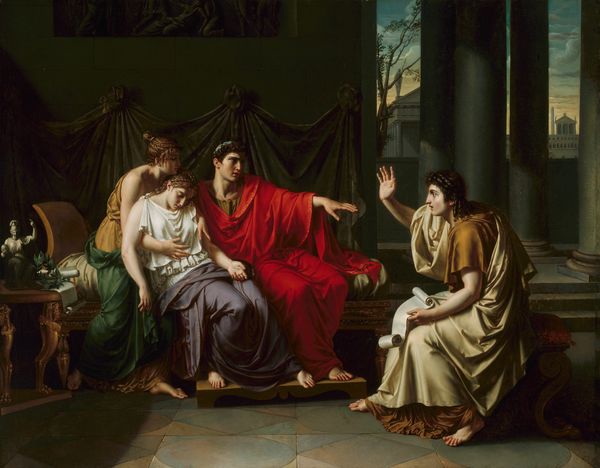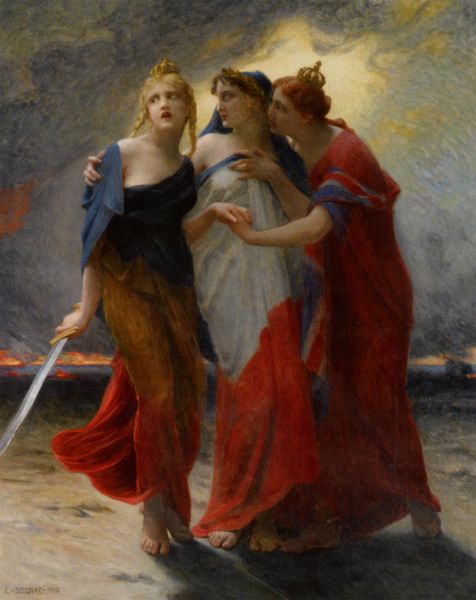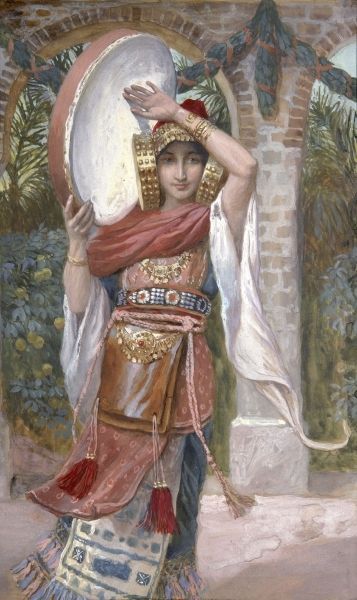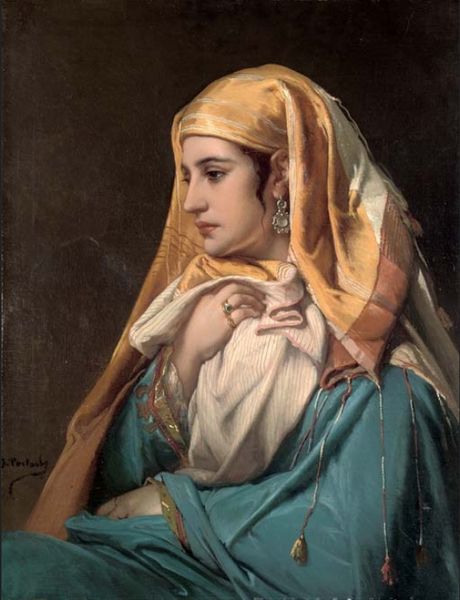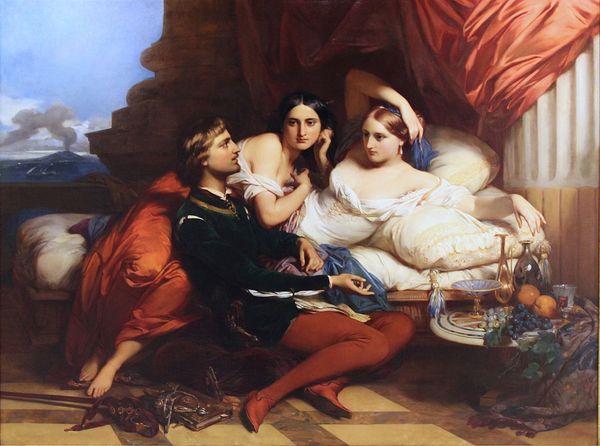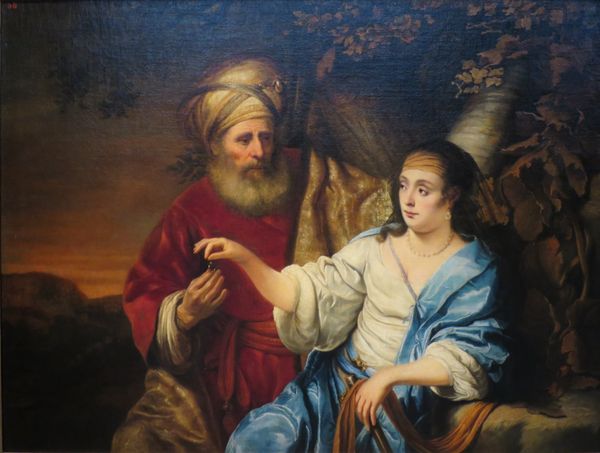
painting, oil-paint
#
portrait
#
allegory
#
painting
#
oil-paint
#
figuration
#
oil painting
#
romanticism
#
mythology
#
history-painting
#
academic-art
#
portrait art
Dimensions: 129 x 98 cm
Copyright: Public domain
Editor: We are looking at "Herodias," an oil painting made in 1843 by Paul Delaroche. It’s currently housed at the Wallraf-Richartz Museum in Cologne. The painting holds a dark and almost theatrical presence. What structural components are most notable to you in this work? Curator: Delaroche masterfully orchestrates a stark contrast between the vivid colors of Herodias’ garments—the radiant gold and deep crimson—and the somber, almost lifeless palette used for the head of John the Baptist. This dichotomy immediately draws the eye and creates a focal point predicated on visual tension. Consider how the draped fabric in the background, rendered in cool greens and whites, acts as a contrasting backdrop, intensifying the emotional impact. Editor: I see what you mean about the strategic use of color. The composition feels carefully calculated. Is that tension intentionally translated by Delaroche? Curator: The deliberate arrangement of figures contributes significantly. Herodias, positioned centrally and illuminated, commands our attention. Her gaze, cool and composed, directly engages the viewer. Notice the assistant behind her, seemingly recoiling from the spectacle; this figure provides a psychological counterpoint, a foil to Herodias' calculated demeanor. It creates narrative complexity through form and juxtaposition. Editor: The interplay of light and shadow enhances the dramatic effect significantly. How did this further develop an emotional reaction to this painting, especially during this historical period? Curator: Absolutely. Delaroche’s keen attention to detail and dramatic flair is rooted in Romanticism’s emphasis on emotion and the sublime, but he employs these elements with a rigorous academic structure. In examining Romanticism, we should discuss the development of form in history painting during this period and delve further into the manipulation of semiotics in figurative paintings. Editor: Thinking about the formal structure really clarifies how much intention there is behind this painting. Curator: Indeed. Analyzing visual elements like color, composition, and contrast grants access into both intended narrative interpretations of Romanticism and historical artistic structures of figurative painting.
Comments
No comments
Be the first to comment and join the conversation on the ultimate creative platform.
